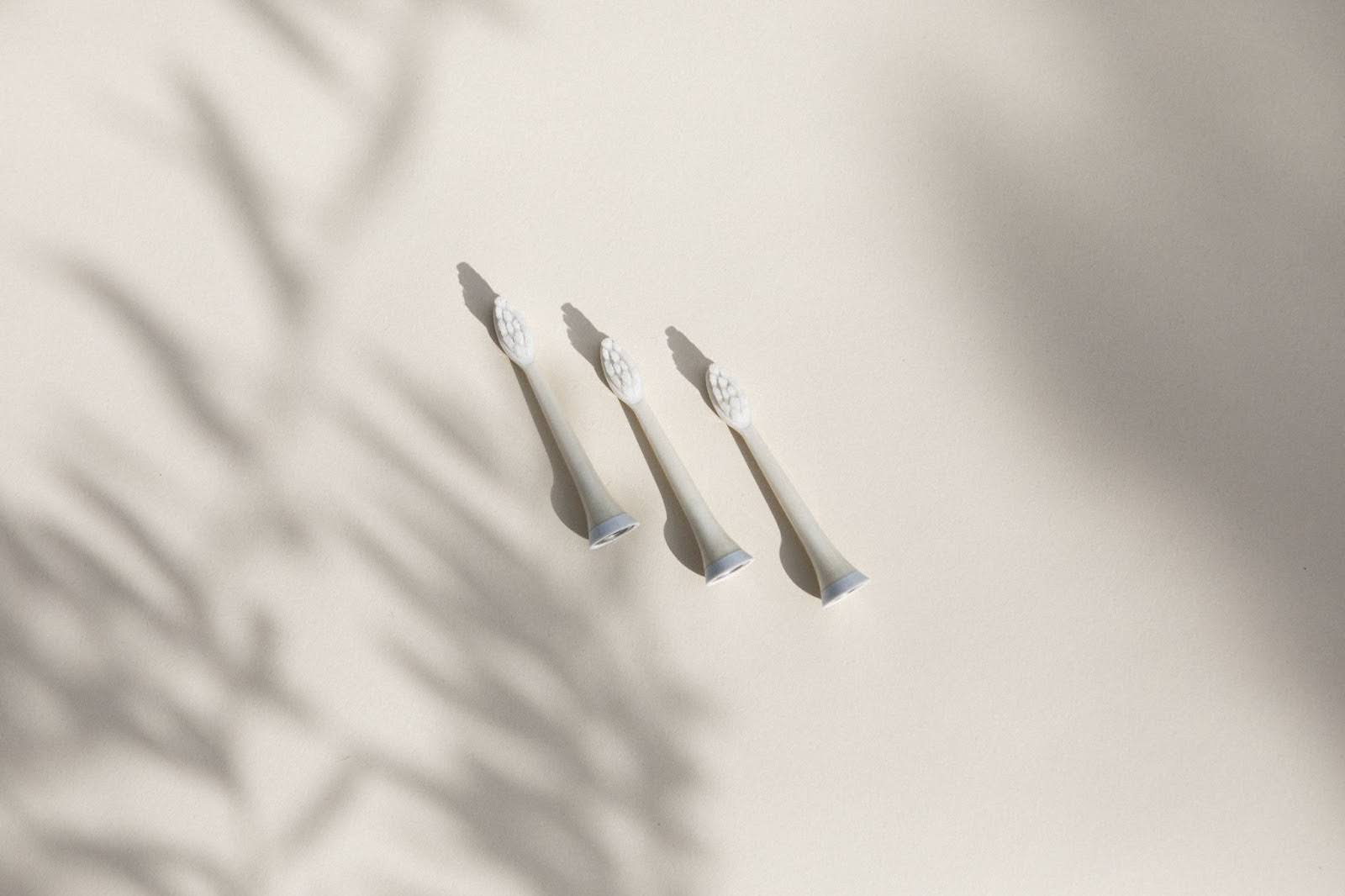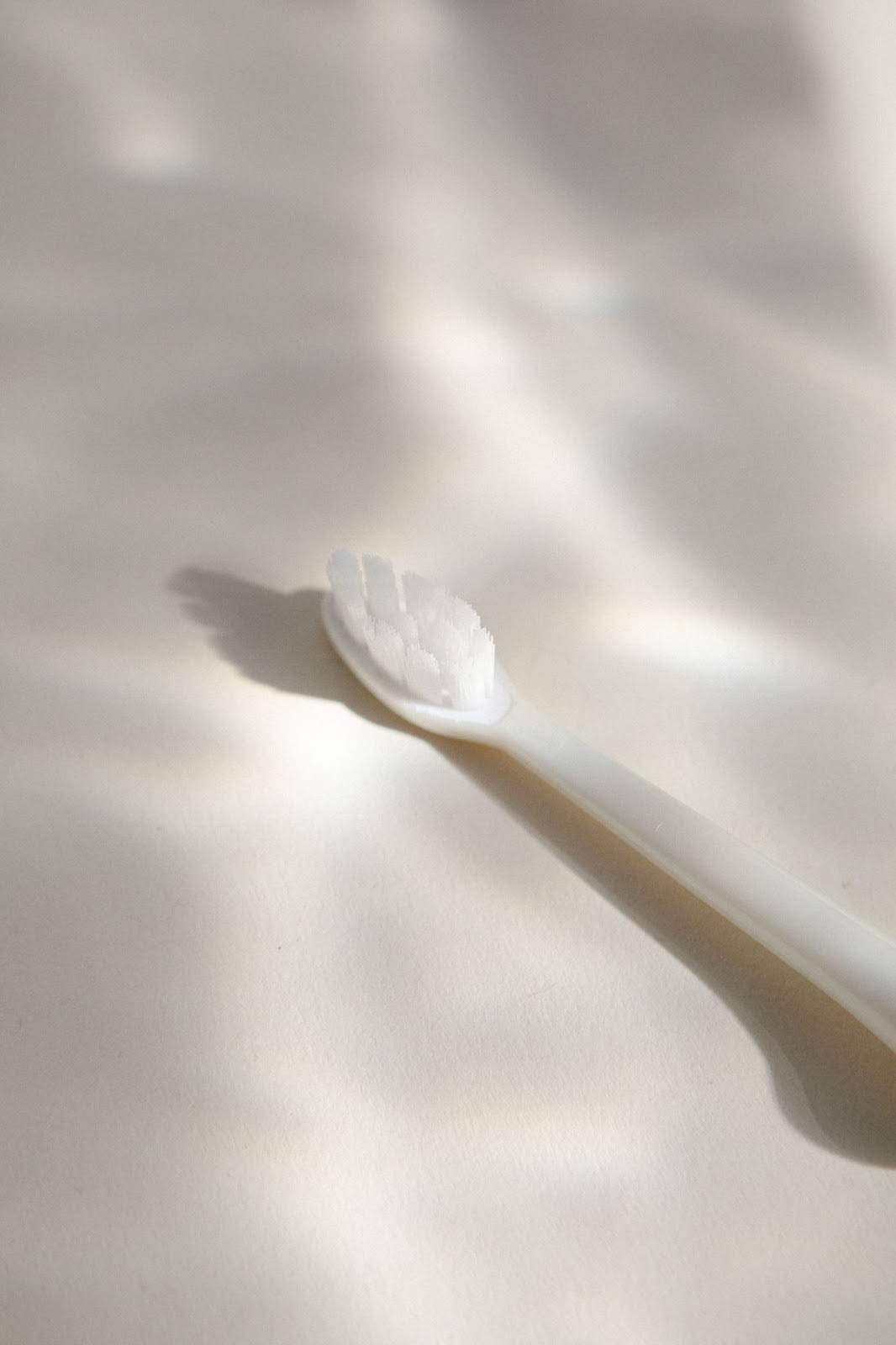Why Replacing Toothbrush Heads Matters
Key Takeaways:
- Health Benefits: Regular toothbrush head replacement is essential to avoid bacteria build-up, ensure effective plaque removal, and protect gums from damage. Fresh bristles maintain optimal cleaning efficiency and help prevent oral health problems.
- Replacement Frequency: Dental experts recommend changing toothbrush heads every three to four months, or earlier if bristles are frayed, to keep your toothbrush effective in thoroughly cleaning teeth and gums.
- Performance And Effectiveness: Consistently replacing toothbrush heads ensures that your toothbrush maintains optimal performance, providing a thorough clean that manual toothbrushes or worn-out heads cannot match. Replacing toothbrush heads regularly can save money by avoiding dental issues from poor brushing.
The Role Of Your Toothbrush In Oral Health
Your toothbrush is a key player in your oral health routine, serving as the main defense against plaque, bacteria, cavities, gum disease, and bad breath. Its effectiveness largely depends on the condition of its bristles.
Fresh Bristles, Better Cleaning
New toothbrush heads feature straight, effective bristles for cleaning hard-to-reach areas in your mouth. However, with regular use, bristles can bend, fray, and soften, diminishing the toothbrush's effectiveness and potentially leading to excessive brushing pressure.
Bacterial Build-Up On Used Toothbrush Heads
Toothbrush heads accumulate bacteria over time, and while rinsing them post-use helps, it doesn't fully sterilize the bristles. The damp environment can promote bacterial growth, risking bacteria re-introducing into your mouth.
Signs It's Time To Change Your Toothbrush Head
Keeping track of when to replace your toothbrush head is vital for oral health but can be easy to forget. Here are key signs that it's time for a new toothbrush head:
1. Frayed Bristles
A clear sign to replace your toothbrush head is when the bristles fray, bend, or appear worn. Frayed bristles clean less effectively, losing the ability to remove plaque and reach tight spaces between teeth effectively.
2. Bristle Hardness
Toothbrush bristles can harden from dried toothpaste and saliva over time, risking gum and enamel damage and causing sensitivity. If bristles become stiff, it's time to replace the head to avoid oral health issues.
3. Discoloration
Discoloration of toothbrush bristles signifies it's time for a change. Continuous use can cause bristles to hold particles and bacteria, with color changes indicating contaminant buildup that could be re-introduced to your mouth while brushing.
4. Time Frame
Dental professionals advise replacing your toothbrush head every three to four months, even without visible wear signs, to maintain effectiveness and hygiene. If it's been over four months, it's time for a new one.

How Often Should You Replace Your Toothbrush Head?
Finding the right schedule for changing your toothbrush head is key to keeping your dental routine effective and maintaining oral health. Despite different factors that could affect this timeline, dentists agree on a standard guideline to ensure optimal brushing efficiency and cleanliness.
General Guideline
The American Dental Association (ADA) suggests replacing toothbrush heads every three to four months based on typical bristle wear and tear. This is a broad recommendation, and individual needs may vary, requiring more frequent replacements depending on usage and the toothbrush's condition.
Usage And Condition Factors
- Heavy Brushing: For those who brush more vigorously, bristles may wear out faster, necessitating replacements every two months or sooner to maintain effective cleaning.
- Visible Wear: If toothbrush bristles are frayed, flattened, or discolored, it's time to replace them, regardless of the exact time frame. Worn-out bristles compromise cleaning efficiency, risking plaque accumulation and oral health problems.
- After Illness: After recovering from a cold, flu, or oral infection, replacing your toothbrush head is advisable to prevent reintroducing pathogens and reduce reinfection risk.
Type Of Toothbrush Head
The toothbrush head you use can also impact how often it should be replaced. For instance:
- Standard Manual Toothbrush Heads: These typically align with the ADA's recommendation of a replacement every three to four months.
- Electric Toothbrush Heads: Refer to the manufacturer's guidelines for specific replacement times for toothbrush heads, as recommendations can vary by design and durability beyond the standard three-to-four-month rule.
Reminder Techniques
To keep track of when it’s time to swap out your toothbrush head, consider these tips:
- Mark Your Calendar: When you open a new toothbrush head, mark the replacement date on your calendar or set a reminder on your phone.
- Subscription Services: Some companies offer toothbrush head subscription services that automatically send new heads at designated intervals, ensuring you always have a fresh one.
Following these replacement guidelines and adjusting for personal wear and usage can greatly enhance your dental hygiene routine. A fresh toothbrush head boosts oral health and contributes to a cleaner, healthier smile.
The Benefits Of Regularly Changing Your Toothbrush Head
Regularly replacing your toothbrush head is a key dental care practice with wide-ranging benefits. It ensures a cleaner mouth and helps reduce the risk of oral diseases and can lead to cost savings over time.
Enhanced Cleaning Effectiveness
New toothbrush heads excel in removing plaque and food debris thanks to their sharp, firm, and well-aligned bristles. They effectively clean between teeth and along the gum line, preventing plaque buildup that can cause tartar, cavities, and gum disease.
Reduced Bacterial Contamination
Toothbrush heads can harbor bacteria, fungi, and viruses over time, reintroducing these pathogens to your mouth and risking infections. Changing your toothbrush head regularly reduces exposure to these microorganisms, promoting a healthier oral microbiome.
Prevention Of Gum Damage
Damaged toothbrush bristles can harden and become jagged, endangering gums and enamel. Brushing with worn bristles may lead to gum recession, sensitivity, and enamel damage.
Better Breath
A fresh toothbrush head is better at eliminating bacteria that cause bad breath. Regular replacement is a straightforward strategy to fight halitosis, keeping your mouth feeling and smelling fresh.
Encouragement Of Consistent Oral Hygiene Habits
Replacing a toothbrush head, such as with a Plus Ultra Replacement Head, can serve as a periodic reminder of the importance of oral hygiene. Regularly replacing your toothbrush head maintains oral health and encourages a review and enhancement of your dental care routine, including brushing technique, floss, and mouthwash.

Final Thoughts
Regularly changing toothbrush heads is essential for more than just oral hygiene; it's a key part of overall health. This practice boosts brushing effectiveness, prevents gum damage, and reduces bacterial risk.
You enhance oral health by replacing toothbrush heads every three to four months or at signs of wear.
Read also:
- How Often Should An Electric Toothbrush Head Be Replaced?
- Should You Brush Your Teeth After Using Whitening Strips?
- Toothbrush Hygiene: When To Swap Out Your Toothbrush
Frequently Asked Questions
Why is it important to replace toothbrush heads?
Replacing toothbrush heads regularly is crucial for maintaining oral hygiene. Over time, bristles become worn and frayed and lose their effectiveness in removing plaque and bacteria.
How often should you replace your toothbrush head?
Dentists recommend replacing your toothbrush or electric toothbrush head every 3 to 4 months. Consider replacing the head sooner if the bristles become frayed or worn out before this timeframe.
What are the signs that you need to change your toothbrush head?
Signs that indicate the need for a replacement include noticeable fraying, bristle splaying, discoloration, and when the bristles no longer return to their original position. If you've been sick, changing your toothbrush head is also a good idea to prevent re-infection.
What happens if you don't replace your toothbrush head regularly?
Failing to replace your toothbrush head regularly can lead to ineffective cleaning of teeth and gums, increased accumulation of plaque, risk of periodontal diseases, and potential for bacterial growth on the toothbrush head.
Is there a difference in lifespan between manual and electric toothbrush heads?
The recommended replacement timeframe of 3 to 4 months applies to both manual and electric toothbrush heads. However, wear and tear can vary based on usage, so always inspect the brush head regardless of type.
Does the stiffness of the bristle matter when replacing a toothbrush head?
Yes, the stiffness of the bristle matters. Over time, bristles can become too firm due to fraying, which can damage gums and enamel.
How can changing your toothbrush head impact your oral hygiene routine?
Changing your toothbrush head regularly ensures the effectiveness of your oral hygiene routine. A fresh toothbrush head can remove plaque more efficiently, protect your gums, and contribute to better overall oral health.
Can the effectiveness of a toothbrush decline with use?
Absolutely. Over time, the bristles on a toothbrush become worn and lose their effectiveness in cleaning teeth properly. This decline in effectiveness can lead to a buildup of plaque and an increased risk of oral health issues.





Leave a comment